
Do Not Be Bound
Together With
Unbelievers
(II Cor. 6:14)
Be Ready Always To
Give An Answer To
Everyone
(I Peter 3:15)
Commercial Free Site
No Pleas For Money
The High Trinity
And The Deity Of Jesus Christ
Is Jesus God Almighty, The Second Person Of The Trinity?
(Part I)
I and the Father are one. - John 10:30
Introduction
In my pre-Christian days as a studio drummer and an occasional sound engineer,
I once recall a popular band from a nearby city booking a session for several days. I
don't recall the name of their album but I do remember an interesting line in their theme
song: "And God said, I'm Lonely, I'll Make Me a Man." This was the heyday of the '60s
and '70s when rockers were slipping religion into their songs. That phrase was
repeated several times in their music and over the years I've not forgotten it.
I did have some church background at the time, having grown up in the Methodist
church; this is probably the reason the phrase evoked a bit of unease, though I didn't
know exactly why. After I became a Christian some years later and became more
knowledgeable in the scriptures, it would become clear to me why the unease
persisted. The band was conveying through their music a denial of the Trinity and, by
extension, the deity of Jesus Christ. Apparently I had retained just enough
understanding of the Bible as a kid to know something was gravely amiss. Whether the
band did this on purpose or out of ignorance, I don't know. Fortunately, the album did not go far.
The reason for raising the issue is this: If God was completely alone throughout eternity, as the band seemed to indicate, did He have to create living, sentient beings in order to avert loneliness and experience love and friendship? John 1:3 says: "All things were made through Him, and without Him nothing was made that was made." 'All things' mean everything—there was nothing before Creation but God. (God has not revealed anything prior to Creation.)
This is no small matter, the implications are staggering! Since God is infinite, nothing can be added to Him, like love and friendship. To do so would deny His infinite nature and render Him finite and limited. Though this is indeed an enigma, there are solutions.
First, the Bible says that God is unlimited and infinite: "The heavens, even the highest heaven, cannot contain [Him]" (1 Kings 8:27), and "His understanding is infinite" (Psalm 147:5). (See also Isaiah 40;28; Proverbs 15:3; 1 Chronicles 28:9; Jeremiah 23:24, 32:17; Matthew 18:26). Second, God is "Love" (I John 4:8), and "One" (Duet. 6:4), and always has been, which brings us back to our query: How can one solitary Being experience love and fellowship in an empty universe (or for that matter, an empty Heaven)?
The answer to this enigma is the HIGH TRINITY, One God in three Persons—Father, Son and Holy Spirit—each fully, equally and eternally God. Although this tri-Personal Being is impossible for humans to fully comprehend—or human language to even describe—the Trinity is fully consistent with reason and logic (as we'll see later), and in a curious sort of way, pleasing and satisfying to the human psyche. If God is indeed a Trinity of Persons, love and fellowship between them have always existed (e.g., John 17:24).
But, some will ask: How can something so incredibly difficult to understand be believed?
A rough analogy may help: At every second of every day, quadrillions of quadrillions of electrons flow through solid conductors approaching the speed of light (eight times around the earth every second and reversing directions 60 times every second). Although this is impossible for humans to completely grasp, evidence for it is all around us: we use 60-cycle alternating current every day.
In a similar sort of way, we can know the Trinity exists, for as we shall shortly see, evidence for it, too, is all around us.
God's Word Affirms The Trinity
"Then God said, 'Let Us make man in Our image, in Our likeness...' So God created man in His own image, in the image of God He created him; male and female He created them" (Genesis 1:26-27).
Notice it says "Us" and "He," referring to the one and same God. Although some will charge contradiction here, these words are no more contradictory than an object (1) having length, width and height (3), or time (1) being past, present and future (3). Our very space-time-matter (3) universe (1) testifies that three can exist as one.
"For from the creation of the world, the invisible things of Him are clearly seen, being understood through the things that
are made, even His eternal power and Godhead."
- Rom. 1:20
Jesus' Claim To Deity Affirms The Trinity
1. Jesus, citing the Jewish Shema, asserted that there is only one God: "Hear, O Israel, the Lord our God in one Lord" (Mark 12:28). But a few verses later, in refuting the religious leaders opposing Him, says: "How is it that the scribes say that the Christ is the Son of David? For David himself said by the Holy Spirit: 'The Lord said to my Lord, "Sit at My right hand, till I make Your enemies Your footstool."' Therefore if David himself calls Him Lord, how is He then His Son?" (35-37). The religious leaders are silenced.
2. Jesus taught the people to pray to the Father (Mat. 6:6): "Our Father Who art in heaven, hallowed be thy Name" (Mat. 6:9). But in John 14:13 He says: "And whatsoever ye shall ask in my Name, that will I do, that the Father may be glorified in the Son." Here, Jesus equates His Glory with the Father's Glory.
3. God declared through Isaiah the prophet: "I am Jehovah, that is my name; and my glory I will not give to another" (42:8). But in John 17:5, on the night of His arrest, prior to His crucifixion, Jesus prays, "And now, Father, glorify me in your presence with the glory I had with you before the world began." Jesus again equates His Glory with the Father's Glory
4. Jesus also states in John 8:24: "If ye believe not that I AM [he], ye shall die in your sins" ('he' is not in the original, but was added), thus equating Himself with Jehovah in Exodus 3:14: "And God said unto Moses, I AM that I AM: and he said, thus shalt thou say unto the children of Israel, I AM hath sent me unto you."
Other New Testament verses affirm the same: e.g., John 1:1-4, 20:27-28; Col. 1:16, 2:9; Mat. 11:27; as does the Old Testament: Gen. 3:22, 11:7; Isaiah 6:8.
If Jesus is God, The Trinity must exist.
"No sooner do I conceive of the One than I am illuminated by the splendor of the Three; no sooner do I distinguish Three
than I am carried back into the One. When I think of any of the Three, I think of Him as the whole, and my eyes are filled,
and the greater part of what I am thinking escapes me."
- Gregory of Nazianzus
(AD 329-390)
Historical Evidence For The Trinity
"In the beginning was the Word, and the Word was with God, and the Word was God."
- John 1:1-2
Virtually all modern anti-Trinitarian sects and cults claim that ancient deities existed as 'triads' (a triplicity of
gods, i.e., tritheism), which predated Christianity. Thus, it is surmised in various academic circles that tritheism
came first and then devolved into Trinitarianism. In this section we will show that it was Trinitarianism which came
first, then tritheism, and ultimately polytheism (many gods).
Scholars have known for a long time that practically all myths and legends contain kernels of historical truth.1
Although these myths become corrupted over time, many of the kernels remain intact, thus corroborating key
Biblical events like Creation, the Garden of Eden (cf. the Golden Age), the Fall and Curse (the end of the Golden
Age), the Great Flood (a global catastrophe which destroyed nearly all life) and the Tower of Babel (the
dispersion of nations and languages). These kernels of truth, which appear all over the world, in nearly every
culture, must have had a common source. We believe that source to be actual historical events, before and after
the Flood, passed down from generation to generation during the Great Dispersion in Genesis 10.
In his 1951 book, The Flood, professor Alfred Rehwinkel (Concordia Seminary) devotes a whole chapter to
the Flood legends. His research contains persuasive testimony, outside the Bible, that the Great Flood did occur,
destroying the whole world and all life except a small number of survivors (men and beasts) that repopulated the
earth. On page 127 he writes:
The account of the Flood in Genesis does not stand alone. Traditions similar to this record are found among nearly all the nations and tribes of the human race. And this is as one would expect it to be. If that awful world catastrophe, as described in the Bible, actually happened, the existence of the Flood traditions among the widely separated and primitive people is just what is to be expected. It is only natural that the memory of such an event was rehearsed in the ears of the children of the survivors again and again, and possibly made the basis of some religious service. The religious ceremonies connected with these traditions as found, e.g., in Egypt, Mexico and among some tribes of the American Indians, can be satisfactorily explained only in this light. This awful disaster left an indelible impression upon the minds of men before they were scattered abroad; and whether we go to ancient Babylon, the Sumerians or to the Chaldeans, to the Chinese or to the American Indians, to the natives of the Pacific Islands or to the ancient inhabitants of India, everywhere is found some trace of a Flood tradition and a memory of a fearful catastrophe which
destroyed mankind and left behind but one or a few survivors.
Rehwinkel also reminds us of the slow, successive corruption of those legends:
As might be expected, these traditions have been modified through the ages and have been influenced by the customs of the various peoples and by the environment in which they are found and have thus taken on local color and sometimes extravagant and fantastic proportions, so that the kernel of truth in many cases is seriously obscured. And yet, when stripped of the accretions which have accumulated as they were handed down from father to son through the generations, the essential facts of this great catastrophe are easily discernible. There is almost complete agreement among them on all the three main features: 1. There is a universal destruction of the human race and all other living things by water. 2. An ark, or boat, is provided as the means of escape. 3. A seed of mankind is preserved to perpetuate the human race. To these might be added a fourth, which, though not occurring in all the traditions, occurs very frequently, namely, that the wickedness of man is given as the cause of the Flood.
(Many of these legends can be found on the internet.)
If myths and legends do contain kernels of truth, early triad legends suggest strongly that Trinitarianism came first, followed by tritheism, decaying further into polytheism (e.g., Buddhism, Hinduism, Shintoism) and ultimately into the many god & goddess concoctions we see today (e.g., Jehovah's Witnesses, Mormonism, Freemasonry, modern paganism, witchcraft, New Age etc).
Scriptural evidence for this is strong: Several Bible verses tell us God spoke through His prophets from the very beginning. source The Apostle Peter, for example, stated in Acts 3:21, "God spoke by the mouth of all His holy prophets since the world began." Luke alludes likewise in Luke 1:70: The prophets spoke "since the world began." Jesus refers also to the blood
of the prophets, "shed from the foundations of the world" (Luke 11:50). If the prophets of old spoke from the very
beginning, they were probably not quiet about the Trinitarian Creator.
Among these prophets of old was Enoch, the "seventh from Adam" (Jude 14-15), who "walked faithfully
with God 300 years" (Gen. 5:22). Enoch prophesied that Christ would come again, "with ten thousands of His
saints, to execute judgement on all, to convict all who are ungodly among them of all their ungodly deeds which
they have committed in an ungodly way, and of all the harsh things which ungodly sinners have spoken against
Him" (Jude 14-15). Noah, another seer, and a type of Christ (Genesis 5:29), warned his generation of a coming
Flood (Heb. 11:7). Job, a gentile prophet after the Flood, saw the Messiah afar off: "I know that my redeemer
liveth and that he shall stand at last upon the earth, and after my skin hath been destroyed, yet in my flesh, shall
I see God" (Job 19:25-26). Melchizedek, a "priest of the Most High God" (Gen. 14:18), and also a type of Christ
(Hebrews 7:1–3), blessed Abraham, the father of the Hebrews, "who had the promises" (pointing to the Savior -
Gal. 3:16). Balaam, a gentile seer also, from trans-Euphrates, was warned in a dream not to curse God's
Chosen (the Hebrews), from whom the Savior would come (Num. 22:12). These early priests and prophets that
predated the commonwealth of Israel, knew the Trinitarian God, and He knew them.
The "Wise Men of the East," many centuries later, also bore witness that far away
gentiles knew Jehovah. Known as the Magi, they travelled a thousand miles (probably from
Persia) to see the Child-King; having "seen His Star in the East," they came "to worship Him
(Mat. 2:2). How intriguing that the Magi were descendants of Elam (Gen. 10:22), a son of
Shem (progenitor of the Hebrews), a son of Noah. How did they know a Savior-King was to
be born? How did they know it was His Star? How did they know He was to be worshipped?
The silence is deafening. (For more specifics surrounding these mysteries, see P&R
article: The Great Mystery of the Star of Bethlehem.)
Were the Wise Men perhaps schooled in the writings of Daniel and Ezekiel, two exiled
prophets from nearby Babylon 500 years earlier, who prophesied of this Celestial King
(e.g., Dan. 9:24-27; Ezek. 1:26)? Were they versed in the prophecies of the afore-
mentioned Balaam, who predicted: "There shall come forth a Star out of Jacob; a scepter
will rise out of Israel " (Num. 24:17). Certainly, some knowledge of the Trinity—and the impending Incarnation—must have been known to them, else why would they embark on a 4-month journey (cf. Ezra 7:9), a thousand miles away, "to worship Him?"
(Interesting side note: Evidence exists, very scant and old, that the coming of a Redeeming God-Man of some sort was anticipated throughout the pre-Flood world, not only by divine revelation (e.g., Gen. 3:5; Jude 14-15), but by means of the constellations of the ancient night skies (see The Gospel In The Stars (PDF), Joseph Seiss, p. 2). This has been hinted at to some degree by 1st Century historian, Flavius Josephus, who wrote that those of the antediluvian tribe of Seth (a son of Adam, "a virtuous man of excellent character") were the "inventors of that particular sort of wisdom which is concerned with the heavenly bodies and their order" (Josephus, The Complete Works (PDF), p. .1.2.3.). If there's any truth to this ancient lore that the coming of Christ was revealed in the "heavenly bodies and their order," it has long since degenerated into its present wicked and superstitious form—astrology—which the Bible severely condemns (Deut. 4:19) and which author Seiss firmly warns (pp. 125,146).
From the beginning of time, it seems, the coming of a God-Man of some kind was foretold and looked for. Unfortunately, because of their sinful, Fallen state, the antediluvians rejected the ancient prophets, eventually died (most of them in the Great Flood), and their spirits now imprisoned in a dark, ghastly region known as Hades or Sheol, perhaps deep within the earth (cf. Phil. 2:10, Rev. 5:13, or Wikipedia entry: Christian views on Hades]) awaiting the Great White Throne Judgment (Rev. 20:11-15). All the lost and unredeemed who've died since then are there among them.
The scriptures do not record every prognostication spoken by every prophet, but this much we do know: they declared that man is under an unrelenting, unconquerable Curse, facing certain damnation and desperately needs a Savior. That Savior—the 2nd Person of the Trinity—came as He was promised, was crucified to take away our sins and was raised for our Justification. From the Heavenly Throne of David (Acts 2:29-36) He now awaits the decision of every man and woman (and every child capable of understanding) to obey, or reject, the Gospel. Eternal consequences await every decision.
Men are not ignorant, nor in the dark, about this Heavenly Savior. This can be proven by the fact that His Name is cursed and taken in vain every single day. Have you ever heard the name of Zeus, Brahma or Mohammed taken in vain—just once? The debate's over!
The prophetic warnings of long ago are crystal clear and summed up in the last book of the Bible: "The testimony of Jesus is the spirit of prophesy" (Rev. 19:10).
Ancient Shadows Of The Trinity
"The Egyptians... used the triangle as a symbol of their triform divinity."
- Layard, Babylon and Nineveh, p. 605
If our premises are correct, shadows of the Trinity (especially the 2nd Person) should be
evident in early historical records. And this is exactly what we see.
In the ancient Indian Puranas (c. 300 AD), the Hindu triad Trimurti (Brahma, Vishnu and Siva)
placed a curse on anyone who denied the trifold deity.3 Interestingly, Vishnu—the 2nd deity—is
depicted as:
- The creator of the universe (like Jesus, the 2nd Person, Whom "all things were created, in
heaven and on earth" - Col. 1:16)
- Governor of the universe (like Jesus, by Whom "all things hold together" - Col. 1:17)
- The future destroyer of the universe (like Jesus, by Whom "the heavens shall pass away"
- II Peter. 3:1)
- Incarnated to save mankind (like Jesus, "Who became flesh and dwelt among us" - John
1:14) 4
(The similarities between Vishnu and Christ above are no accident. If the Trinity, and perhaps the gradual disclosure of the 2nd Person, were known "in the beginning," and then were corrupted over time, we would expect such likenesses. As listed below, many other similarities have appeared throughout the world.)
In Egypt, the Hymn to Amun (2100 BC) proclaims: "All gods are three: Amun, Re and Ptah." 5
In Greece, Aristotle (c. 400 BC) taught, "All things are three, and thrice is all: and let us use this number in the worship of the gods; for, as the Pythagoreans say, 'everything and all things are bounded by threes, for the end, the middle and the beginning have this number in everything, and these compose the number of the Trinity." 6
In Samaria, the triad Anu, Enlil and Ea was given the 'sky, earth and waters' to form a "Triad of the Great Gods." 7 This perhaps points to the Godhead during the Incarnation:
- Sky (Father, above)
- Earth (Son, below)
- Waters (Holy Spirit, 'water of life' - John 7:38-39)
In Babylon, a 3-headed deity was represented by an equilateral triangle, as in the Roman Catholic
Church.8 3-headed gods were also worshipped in Siberia and Assyria as,
- A head of an old man (the "Ancient of days" [the Father] - Daniel 7:9)
- A circle, or 'seed' (the "seed of David" [the Son] - Rom. 1:3)
- The wings and tail of a bird ("a dove" [the Holy Spirit] - Luke 3:22)
In Japan, Buddhists worshipped San, Pao and Fuh.
The Phoenicians worshipped Ulomus, Ulosuros and Eliun.
The Romans worshipped Jupiter, Neptune and Pluto.
The Germans worshipped Woden, Thor and Fricco.
Triads and three-headed gods were common throughout the ancient world. They must have had
a common source, We believe that source to be the Tri-Personal Creator of Genesis 1: "In the
beginning, God (i.e., Elohim, plural) created the heaven and the earth" (Gen. 1:1).
Progression Of The Trinity
" Go ye therefore and teach all nations, baptizing them in the name of the Father, and of the Son,
and of the Holy Spirit..."
- Matthew 28:19
Christianity teaches there is but one God, namely monotheism, which was affirmed by Jesus in a number of places (e.g., Mat. 4:10; Mark 10:18, 12:29), including the Apostles (Rom. 3:30, 1 Cor. 8:6) and other New Testament writers (James 2:19, Jude 25). Monotheism is also taught in the Old Testament, for example the Shema prayer: "Hear, O Israel: The LORD our God is one LORD" (Deut. 6:4). Other Old Testament scriptures affirm likewise (e.g., II Samuel 7:22, Deuteronomy 4:35 & Psalm 83:18). Although monotheism comprises the foundation of modern Judaism, Judaism denies the Trinity and the deity of Christ, rendering the popular catchphrase of American churches—"Judeo-Christian"—defective and contradictory, and perhaps a bit baffling, considering American Christianity's support for Israel, which steals land from Palestinians (6-15% of them Christian), bulldozes their homes and kills men, women and children who appose them.
In any case, Christianity is unique and singular in this respect, the only religion in the world holding to both monotheism and Trinitarianism.
The word Trinity appears nowhere in the Bible, though its presence is evident. The Old Testament hinted at it early in Genesis 1:26, 3:22 and 11:7, and later in Isaiah 6:8, while the New Testament brought it to further light in places like 2 Cor. 1:21-22 & 12:14; Eph. 4:4-6 and 1 Peter 1:1-2, where all 3 Persons are cited together. Though the Trinity is not mentioned in any theological debates or discourses until around 170 AD, when apologist Theophilus of Antioch first made use of it, it was widely accepted in the early church (as we will see later). Also, we might add, Trinitarianism, without which Jesus' Incarnation cannot be understood or reasonably grasped, is logically sound (as we'll also see) and well-grounded in the Bible.
Nonetheless, modern theologians and high-churchmen feel no shame in maligning the triumphant 4th Century Trinitarian defenders and playing them down, such as Athanasius and the Cappadocian Fathers, who feared neither flame nor sword. Yet, the religious elites of our day owe their very acclaim and big pay to these old warriors. True it may be that in those days the scriptures were scant and few, and they may not have always been faultless or perfect grounded in Holy Writ, but they did do the hard, exhausting and dangerous work, often without pay and with great risk to life and limb.
Athanasius (c. AD 296–373), we're told, spent much of his life straining for one word: the Greek word
homoousios, which conveys the view that Christ was of the same substance as the Father, the basis of
our Trinitarian theology today. It is said that during one of his exiles, with no access to the scriptures,
he wrote a letter to a friend and quoted every verse in the New Testament referring to the Trinity.9
During his 45 years as intermittent Bishop of Alexandria, Athanasius was banished five times by four
emperors (a total of 17 years) and fled for his life on 6 occasions. Emperor Constantius II placed severe
measures against him, that if he set foot in his realm, he would be put to death. Athanasius and scores of
others defended the faith at great risk of exile and their very lives, never wavering. (One cannot but wonder
how today's "health and wealth" con-artists might hold up under such circumstances.)
Varied accounts show that without a reasonable grasp of the Trinity, and a fair-minded understanding
of the Old Testament Law and New Testament Grace, a flawed perception of God will almost always
result.
For example, Marcion of Sinope, a wealthy Bishop's son, taught that the God of the Old Testament
was a finite creator (a demiurge using pre-existing matter), who was inferior and subordinate to the God
of the New Testament (an odd kind of Binitarianism). Marcion also rejected Jesus's physical body (and thus
Jesus's physical resurrection), owing that matter was evil and eternal (and contrary to science).
Such heretical views, coupled with complexities in Trinitarian thinking, hindered Trinitarianism for centuries. Though the theologians and apologists done the best they could under the circumstances of their day, they knew that nothing short of painstaking accuracy and precise wording could ever defeat the apostates and dissenters. This they did, and did it well.
Regarding the aforementioned term homoousios, author and professor Harold O.J. Brown in his book, Heresies, lays out the word's early theological necessity:
"Gibbon and others would have us to believe that the whole controversy was a dispute over a trifle, simply the 'iota' that
distinguishes the two Greek words, 'homoosious, of the same substance,' and 'homoiousios, of similar substance.' Orthodoxy, however, was persuaded that everything that was important depends on excluding the iota on confessing Christ as of the
same substance as the Father, not as of like substance." 10
Brown undergirds the fact that the early apologists were unyielding and resolute in their exclusion of the iota, which they perceived as the difference between heaven and hell. Unbeknownst to many in the church today, belief in Jesus' Divinity is a prerequisite for salvation; Jesus said in John 8:24: "If you believe not that I AM, you will die in your sins." Excluding the iota is a far cry from 'theological overkill,' charged by a number of past and present over-adventurous theologians. Source Source
During the iota controversy, the First Council of Nicaea was convened
in 325 AD, an assembly of 300 Bishops from throughout the Roman Empire.
Summoned by Emperor Constantine, it was to ease tensions between the
orthodox and non-conformists, and to restore peace and harmony in his
realm. Although the council may have been more political than religious, the
outcome—that Christ was God—was firmly established.
The issue of Christ's divinity has arisen repeatedly throughout the
centuries, prompting Prof. Brown to expound further:
"The history of Christian theology is in large part a history of
heresies, because Jesus and the claims He made... seemed incredible." 11
(Incredible they were, which is why our Savior backed His claims with miracles.)
The Nicene Creed was the result of the first of many Christian Councils. Creeds, which are man-made and extra-Biblical, are always prone to error or misreadings, as various creeds are today. Although the Nicene Creed, though commendable indeed, was neither inspired or flawless (in the sense that the Bible is Inspired and flawless), the Divinity of Jesus was firmly upheld and established, and remains today one of the central theological pillars of Christianity.
Following Nicaea, the Gutenberg printing press would not be invented (i.e., in Europe) for another thousand years (around AD 1440). Unlike today, with low-priced Bibles strewn about in every house—and seldom ever read—the price of a hand-copied Bible prior to Gutenberg was equal to, or exceeding, the wages of an entire year. Under such circumstances—i.e., the near impossibility of a common man owning a Bible, let alone reading and studying one, and trusting in a corrupt priesthood for his salvation—what if the heretics had won? In your author's opinion, very much was gained at Nicaea.
Anti-Trinitarianism: Past And Present
"The pure and simple unity of the creator of the universe is now all but ascendent in the Eastern states:
it is dawning in the West, and advancing towards the South; and I confidently expect that the present generation will
see Unitarianism become the general religion of the United States."
- Thomas Jefferson, 1822
Contrary to the hopes and aspirations of our 3rd President (a Diest), Unitarianism never took hold in our new nation; the majority of European settlers were Protestant and strong Trinitarians. Today, however, with New Age heathenism on the rise, non-Trinitarian sects are becoming more numerous than one might at first suppose. Gnosticism, for example, a principal element within Freemasonry, source is one in which Jesus is seen as a heavenly aeon, an emanation of a supreme deity of some sort, neither human nor divine. Yet, gnostics believe they themselves can become gods by acquiring secret, esoteric knowledge, such as the arcane teaching that the body (indeed, all matter) is evil, e.g., a prison of the soul from which none can escape without acquiring more esoteric knowledge (cf. Buddhism, Hinduism, ancient mysteries etc) or perhaps a dosage of spiritual ecstasy (cf. theosophy, karma, samadhi etc). This, of course, repudiates Jesus' physical, fleshly body (before and after the resurrection), as well as warnings against all anti-Christs (2 John 6-10). But most importantly, it nullifies God's plan of salvation through the Incarnation (Phil. 2:6-8).
(Important side note: An equivalent view of gnosticism: that the physical body is of little or no value, slips into Sunday School classes from time to time via the 'cremation option'; namely, incinerating the body by fire after death to 'save a little money' for the kids. However, those who trivialize the body this way fail to consider the difference between our Fallen, sin-prone bodies and our future resurrected and glorified bodies [I Cor. 15:42-44; 52]. Rom. 8:11 & 23 says Jesus suffered and died, "for... the redemption of our bodies." Cor. 6:13 says similarly: "The body is... for the Lord, and the Lord for the body," as does Phil. 1:20: "Christ shall be magnified in my body, whether by life or death." I Cor. 6:19 states that the body is "the temple of the Holy Spirit," and at the resurrection our spirits will return to our bodies, giving rise to a new, imperishable "spiritual body," raised in power and glory [I Cor. 15: 42-44]. Yet, cremation advocates will fight tooth and nail that it's okay to incinerate the body because Christian martyrs of old were burned at the stake, and God can certainly raise their ashes on the Last Day. This is true, of course, but irrelevant. Martyrs generally had two choices: deny Christ or burn. Many chose the later. Though we in the Wast do not face such horrors today, many opt for the flame anyway, mainly for economic reasons. In your author's opinion, those who purposely burn their blood-redeemed bodies merely for thrift and convenience, dishonor their bodies, their bodies' Creator and their bodies Redeemer.)'
At any rate, anti-Trinitarian sects are many today. They include among others: Freemasonry (15 million worldwide), Rosicrucians (250,000), Christian Science (400,000), Unity School of Christianity (1 million), Mormonism (14 million), Anthroposophy (46,000) and various New Age sects (3-5 million in the US alone).
Some of the earlier sects were numerous too, such as the Ebionites (100-400 AD), a Jewish-Christian group that not only dismissed the Trinity, but Christ's pre-existence, the virgin birth and Jesus' atoning death and resurrection. They viewed our Savior not as God, but a special human being chosen by God to be the long awaited prophet and messiah. An equivalent today would be Islam, which claims a billion and a half followers worldwide (1/4 of the world's population).
Another was the 2nd Century Adoptionists (often referred to as Dynamic Monarchists), who held that Jesus was wholly devoted to God, was sinless and holy, but not eternal. Jesus became divine during His adoption by the Father, either at His baptism, resurrection or ascension, depending on which faction was speaking. Adoptionists also reject Jesus' pre-incarnate existence and 'hypostatic union' (merger of the human & Divine). A modern equivalent would be Unitarians (around 800.000 strong), who hold that God is one Being and one Person.
3rd Century Modalism (also called Sabellianism) held that the Father and Son were one and the
same person, each performing a different 'mode' of operation within the divine economy. (According
to this view, the Father was crucified too.) Modalists also baptize in Jesus' name only, in contrast to
Matthew's formula of 'Father, Son and Holy Spirit' (28:18). Contemporary equivalents would include
Oneness Pentecostals (25 million) and Jehovah's Witnesses (8 million).
One notable Modalist today is TV celebrity and Word Faith proponent, T.D. Jakes, who not only
denies the Trinity, but preaches that we are all little gods and have God's DNA.12 Due to severe
criticism (and perhaps a loss of revenue), Jakes is reluctantly moving toward Trinitarianism. 13
Docetism, another heresy, arose during the early 3rd Century, prodded by the non-canonical
Gospel of Peter (and perhaps some Greek Oriental and heterodox Jewish schools of thought).
Docetism held that Jesus was just a phantom of sorts and only appeared to be human (and thus
only appeared to die on the cross). Docetism corresponds with radical modernism and the Muslim
Qur'an which denies Jesus is God and His death on the cross. (Interestingly, the Muslim Qur'an was
composed in Mecca when Docetism was popular among Mecca's neighbors,}
The aforementioned Arians, appearing around 300 AD, became a major theological movement. Arians taught that Jesus was a non-divine being, was created to aid the Father in the creation of the universe and to provide for man's salvation. Arianism closely resembles the Jehovah's Witnesses, Unitarians and the Church of God International.
5th Century Pelagianism held that Adam's sin hurt no one but himself, and that humans existed in a sinless state prior to Christ's coming. Those who kept the Old Testament Law would avoid Judgement and those saved under the New Covenant would rise triumphantly on the Last Day, not because of Jesus' death and resurrection, but because of Jesus' example. Various aspects of pelagianism comport with Mormonism and Mormon Fundamentalism .
The Socinians, appearing much later in the 15th and 16th centuries, taught that Christ was the perfect and sinless Messiah, was born of a virgin, but was not the eternal God. Socinians were also skeptics and rejected free will. Modern-day equivalents would comprise the Christadelphians (60,000 members), who deny the immortality of the soul, the sanctification of the saved, the personhood of the Holy Spirit and the existence of hell. Socinianism also corresponds with the Church of God General Conference (5,000 members), which rejects Christ's Divinity and the personhood of the Holy Spirit.
A most interesting non-Trinitarian sect is the very fanatical and powerful Iglesia ni Cristo, the
third largest church in the Philippines (3 million worldwide). Iglesia ni Cristo is anti-Catholic and
anti-Protestant. Although they represent only 2.6% of the Philippine population, they hold an
inordinate amount of political power in a country 80% Catholic. Founder Felix Manalo (deceased)
claimed to be one of God's final messengers (a claim made by almost every cult leader), while the
church claims sole authority to interpret and preach the Bible (a claim made by its Catholic
counterpart). Iglesia ni Cristo, like other non-Trinitarians, see Jesus not as the Mighty God, but as
an exalted created being like that of the Jehovah's Witnesses, New Agers and Freemasons.
The Church of God International was founded in 1978 by Garner Ted Armstrong upon
departure from his father's massive sect, the Worldwide Church of God. Herbert W. Armstrong,
Garner Ted's father, was a well-known religious radio and TV personality during the 1950s and
1960s. Both are now deceased. The Church of God International is strictly monotheistic, holding
that Jesus Christ alone is God; the Father, Son and Holy Spirit consisting of one person and one being. The CGI erroneously worships on the Jewish Sabbath (Saturday) instead of the "first day of the week" (Sunday), the day Christ rose from the dead, as taught under the New Covenant (e.g., Acts 20:7, 1 Corinthians 16:2). The CGI has since expanded to 62 congregations, in Canada, Jamaica, Australia, the Philippines, Ireland and the United States.
In 1998, amid accusations of sexual misconduct (which happens to nearly every religious cult leader), Garner Ted was removed from leadership.
Oneness Pentecostalism, which began in 1914, is sometimes referred to as Apostolic Pentecostalism, or Jesus Only Pentecostalism. Oneness Pentecostalists, like other unitarians, are hard monotheists and believe the Father, Son and Holy Spirit are one person, though the Father lives in the Spirit, and the Son lives in the flesh simultaneously. Oneness Pentecostalism is another sect which baptizes in Jesus' Name only, in violation of the Trinitarian formula in Mat. 28:19.
The South African 'New Church' (a.k.a., Swedenborgianism), holds that the Trinity is a special creation of God, i.e., "three essentials" of Divinity, or "soul, body and spirit." New Church holds that Jesus came to earth, not to atone for man's sins, but "to make everybody happy," which is taught today in many American churches. For example, during a church service in 2014, Victoria Osteen, wife of celebrity preacher, Joel Osteen, told her 52,000 member Lakewood Church: "God wants you to be happy and church is about you." source), New Church and its offshoots claim a membership of 30,000.
The Religious Society Of Friends, more commonly known as the Quakers, have beliefs
that are vague and open to debate. Generally, Quakers believe in God the Father, Jesus
Christ the Son, and the Holy Spirit, though the role of each varies among members; any of the
three may or may not be Persons. Quakers also hold to Universalism, the belief that everyone
will be saved on the Last Day, which contradicts Jesus' words in Mat. 7:14: "Small is the gate,
and narrow is the way, which leads unto life, and few there be that find it" (Mat. 7:14). As of
2007 there were around 400,000 Quakers worldwide.
The Unitarian Universalist Church was established in 1961, and holds to a strictly
unitarian view of God, composed of one person/one God. As such, Unitarians reject Jesus as
the 2nd Person of the Godhead; He was only a man, they say, but a man with a unique
relationship to God. Unitarians have no official creed, though they search for truth in all the
world's religions. (This writer once knew a Unitarian who said her church encouraged
everyone to believe whatever they wanted.) As of 2001, nearly 630,000 Americans have
merged with Unitarian Universalism.
Non-Trinitarians today are as numerous as they were in the early centuries of the church. As we've documented, when the Trinity is repudiated, long-established article of faith are swept away too, for example: the universal curse of sin; man's Fallenness; Jesus' pre-existence, Incarnation and Divinity; the Personhood of the Holy Spirit; Jesus' virgin birth, Jesus' crucifixion, resurrection and Ascension; Christ's perfect and sinless life; Christ's perfect sacrifice; God's Grace; corporate worship on the first day of the week, and the salvation of the obedient few.
Moreover, as we've seen, Trinitarian opposition gives rise to religious contradictions and blasphemies—and oftentimes silliness—such as Masonic superstitions, secrecy and apotheosis; the crucifixion of the Father; sinful human flesh; Father and Son as the same person; the Fatherhood of Jesus; the coming of Jesus to "make everybody happy", and the 'creation of the Trinity.'
It should be crystal clear at this juncture that any searcher for truth must exercise great caution and care when seeking out a church today. Overzealous, shallow thinking church-leaders, and religious con-artists know no bounds in misleading uninformed but honest church seekers. You can be sure of one thing: When anti-Trinitarian babble shows up in the theological mix, apostasy and heresy (and very often sexual misconduct) will always follow. Run from these people like you'd run from a rattlesnake.
Endnotes
1. Oxford University Press https://www.diffen.com/difference/Legend_vs_Myth
2. Price, The Stones Cry Out; Harvest House, back cover
3. Sinclair, Old Truths in a New Light; pp. 382-383, (The author is one who believes that Trinitarianism borrowed from Tritheism.)
4. Wikipedia; entries, Hinduism, Trimurti and Vishnu
5. Najovits, Egypt, Trunk of the Tree; pp. 83-84
6. Weigall, Paganism in Our Christianity, pp. 197-198
7. The Larousse Encyclopedia of Mythology; pp. 54-55
8. Hislop, The Two Babylons; p, 16; Rock, The Mystical Woman and the Cities of the Nations; pp. 22-23
9. Ibid. p. 18
10. Brown, Heresies; p. 108
11. Ibid. back cover
12. Apprising Ministries; http://apprising.org/2012/12/28/joyce-meyer-and-t-d-jakes-teaching-word-faith-little-gods-doctrine/
13. Baptist Press; TD Jakes says he has embraced The Trinity; http://www.bpnews.net/37054


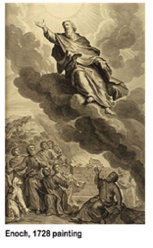
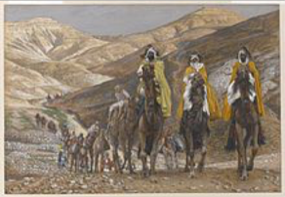
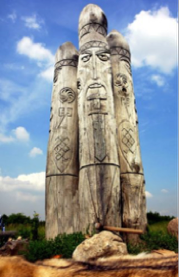
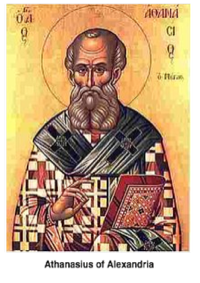
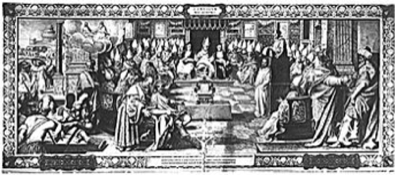
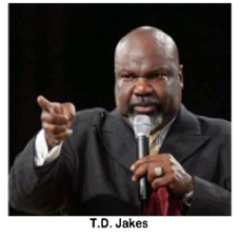
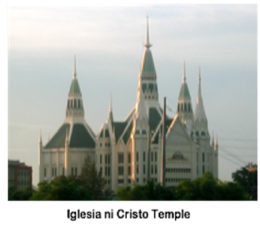

Council of Nicaea


